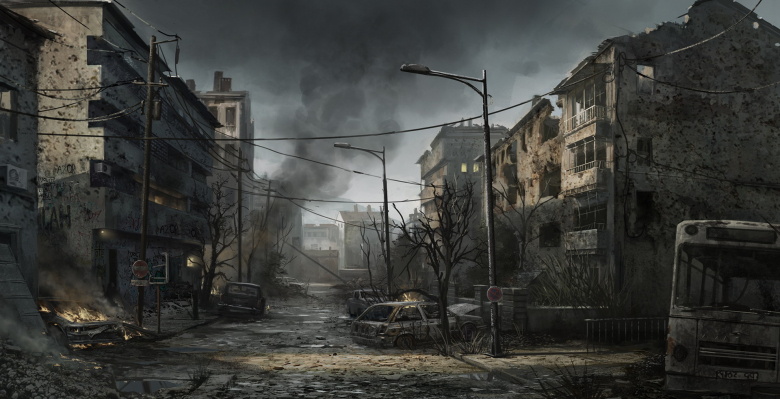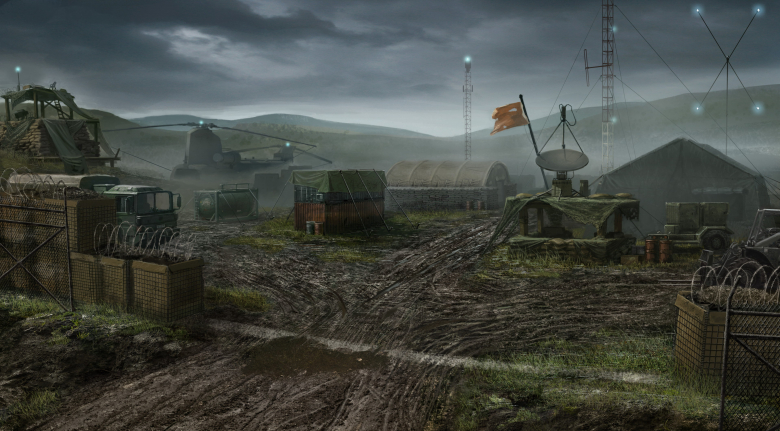
Commanders!
As part of the upcoming Storyline Campaign, we have prepared a series of articles dedicated to the world of Armored Warfare, its background and the general storyline. In the next few days, weeks and months, we will unveil the Armored Warfare background that the campaign will be built on.

Today's article focuses on the state of the world of the late 2030s.
The Broken World
In the late 2010s, Europe found itself at a crossroads. Its economy never truly recovered from the massive financial crisis, the impact of which was made considerably worse by European Union governments being completely detached from their voter base and the reality of daily life in most European cities. While the United States adapted to the situation and leaned more towards isolationism, Europe chose to keep its borders open, leading to the arrival of millions of refugees from the war-torn Middle East, despite warnings from all major militaries and police forces.
Unwilling to accept the reality of new security risks, the passivity and indecisiveness of European governments led to the worst series of terrorist attacks in history, culminating in the detonation of two "dirty" nuclear devices on the outskirts of Paris and Berlin. While the casualty rate was relatively light, the sight of massive atomic-like explosions and the subsequent news reports of victims dead or dying from radiation sparked a revolution of the kind Europe had never seen in its modern history. The United States managed to avoid such attacks, but the American economy also suffered with the southern states ravaged by what eventually grew into a full-scale war with militias and terrorist groups backed by drug cartels, now fully in charge of several South American countries and emboldened by the perceived weakness of the West.
In the wake of the attacks, the European Union became completely paralyzed as all traditional political parties collapse virtually overnight, burned away by the fires of people's rage. Populist leaders rose to power with promises to end corruption, solve the constant state of crisis and make Europe safe again.
Backed by unprecedented popular support, a massive hunt for the culprits began. By the time it ended two years later, thousands of formerly "untouchable" political figures, bankers or businessmen had been found guilty of contributing to the state of the world and executed or sentenced to life in prison. But for all their momentary support, the revolution leaders could only ride the popularity wave so far and the economic situation just kept getting worse. Many economic structures had been damaged beyond recovery, factories had been looted and closed down, the infrastructure suffering from years of neglect. While most European countries avoided complete collapse, practically every advanced country in the world saw its situation worsen with the biggest burden of funding cuts crushing the weakest members of society – the sick and the elderly.
The worsening healthcare and social service situation led to further riots that threatened to destroy the last vestiges of stability that Europe and North America clung to. And in their desperation, the leaders turned to corporations, hammering the last nail into the coffin of the old world.
Rise of the Corporations
The largest corporations in the world survived the entire European crisis relatively unscathed due to their global nature. Many of their leaders in fact exploited the chaos, secretly fueling unrest to give them a better bargaining position. When the dust settled, many of the largest companies found themselves richer than the traditional countries. Attempts to rein them in and tax them just kept failing because of the sheer amount of power and wealth they wielded – any court proceedings were blocked by obstructions, taxmen were paid off and any politician that tried to impose new corporate rules quickly found his opposition suddenly receiving a massive monetary influx.
In their desperation, European leaders traded the only thing they had left for bailouts and relief to the beleaguered countries – rights, privileges and land. Within a few short years, entire regions were sold off as private property in exchange for financial aid and every such step only made corporations stronger and countries weaker. The process culminated in the signing of the 2029 Bordeaux Treaty, granting most major corporations complete exemption from local legal and tax systems (including local constitutions) and allowing them to form private armies and police forces.
Territories owned by corporations were known by the term Corporate Space and they became independent countries in all but name, sustained by trade and business wealth while countries withered away from lack of revenue and stability.
This naturally caused hundreds of thousands of citizens to flock towards Corporate Space, but those hoping for a piece of their old life quickly found that this was not how things worked anymore. In Corporate Space, the principle of citizenship was replaced by a contract between the corporation and its subject. These contracts were often extremely restrictive with the corporate subject giving up most basic rights such as free speech, the freedom to assemble or the right for political representation and agreeing to become company workforce for an undetermined period of time in exchange for the promise of food and shelter.
These contracts became known as "indentured service", a modern version of slavery. Ruthless corporate security forces hunted down malcontents and dissidents. When caught, anyone resisting the company was deported from its territory – or worse. In the months following the signing of the Bordeaux Treaty, tens of thousands of people labeled "security risks" disappeared completely, their fate unknown. And so, millions of people found themselves in a totalitarian world that they could not have imagined in their worst nightmares.
Corporate Armies and Mercenaries
After the Bordeaux Treaty, each major corporation established a military branch, usually based on its own security service and staffed by former professional soldiers, mercenaries and killers. While some of these units respected the basic laws of civilized warfare, others – such as the Clayburn Industries' Crimson Reavers – became infamous for their brutality and ruthlessness.

Faced with the need to protect their own assets and with traditional armies and police forces unable to protect them anymore, smaller corporations and countries came together and after many months of negotiation agreed upon the Private Military Treaty, a multilateral contract defining the conditions of establishing, running and employing private military forces available for hire. A legal Private Military Force had to be registered in Istanbul (which subsequently became known as the Mercenary City) and was subject to a number of restrictions that included a WMD ownership ban and a uniform Code of Conduct, prohibiting battlefield cruelty and attacks against civilians.
Any forces not adhering to the Code were not recognized as official PMCs, regardless of their size and were usually given no quarter in battle. After the complete annihilation of several such warbands during the bloody Operation Sentinel in Kenya, many PMCs, bent on exploiting the situation, came around and subjected themselves to Treaty registration.
Freedom at a Price
Still, there were those who would not submit for any number of reasons. Some hated what the world had become, some wanted to be the new world's freedom fighters and some simply wanted to be left alone. These men and women were drawn to the areas of the world that the old nations were unable to control and the new corporations were not interested in. These areas eventually became known as Badlands with the biggest such areas located in the American Southwest, north-western China and central Africa. Occasional corporate attempts to annex these areas invariably led to a quick capture, followed by a protracted guerrilla war that ended in massive corporate force losses, making the corporation pull out as there was no profit in controlling such an unstable territory.
As the 2030s entered their second half, an uneasy balance was achieved between countries and corporations. But corporate greed knows no limits and dozens of freedom fighter groups, criminal organizations and deadly cults are spawned every year. It is only a question of time before the world is plunged into the chaos of war once more.
Welcome to the world of Armored Warfare.








